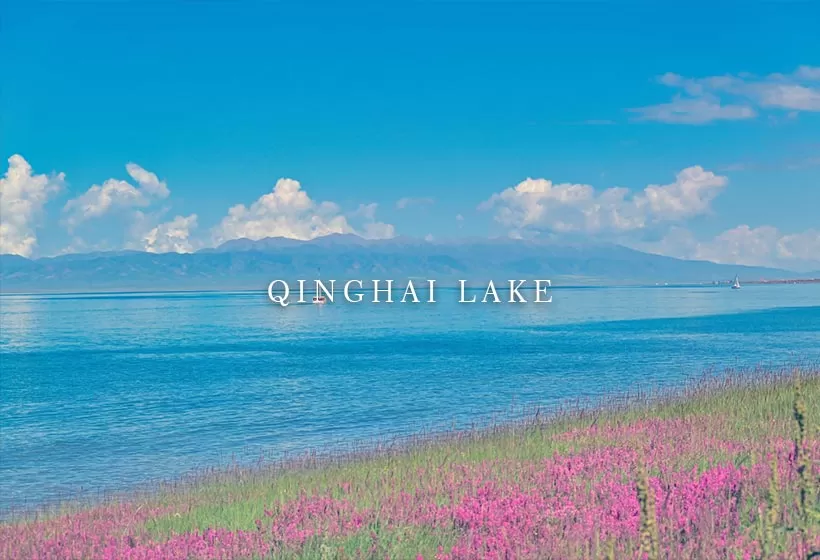Top 10 Famous Tourist Qinghai Attractions and Sightseeing
The beauty of Qinghai is like a painting unfolding along the journey. Qinghai boasts ultimate landscapes, a place that many people seek for the poetry and distance. As you walk through this vast and rugged land, you encounter magnificent and radiant relics, witness mountains, lakes deserts, grasslands, and glaciers, with beautiful scenery accompanying you every step of the way. Here are the Qinghai top 10 attractions.
Top 1: Qinghai Lake
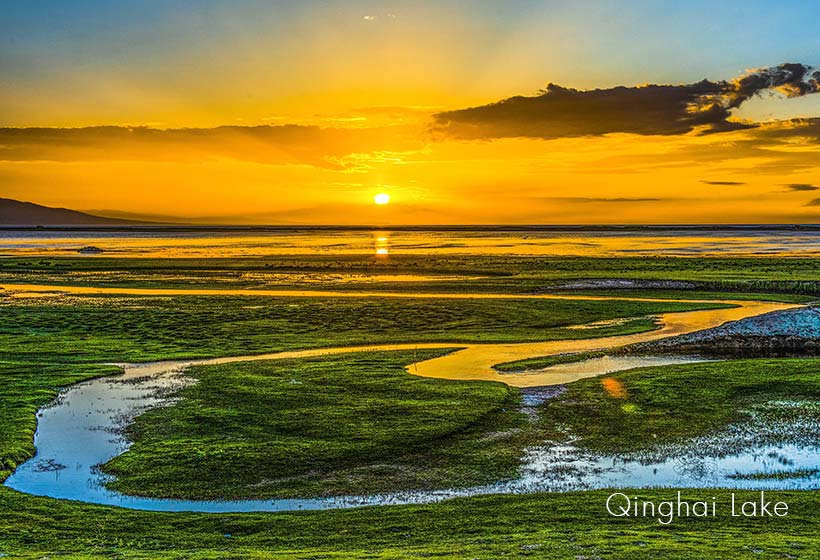 Qinghai Lake
Qinghai LakeQinghai Lake, located in the northeastern part of the Tibetan Plateau, is the largest inland saltwater lake on the plateau in China. The lake covers an area of 4,625.6 square kilometers, with a water volume of 74.3 billion cubic meters.
Qinghai Lake is one of the highest lakes in the world, with its surface elevation at 3,196 meters. The overall shape of the basin is elliptical, tilting from the northwest to the southeast, forming a closed inland basin, with its shape resembling a "soaring eagle". Surrounded by undulating mountains and crisscrossed by rivers, Qinghai Lake is a breathtaking sight. When walking along the lake's shore, the vast blue hue stretches for miles. The sky serves as a canvas, and the water reflects the mirror-like image of the heavens, with the blue sky and white clouds mirrored in the lake. The blue of the water and sky merging as one, is the mesmerizing beauty of Qinghai Lake.
Qinghai Lake is regarded as a "sacred lake" by the local Tibetan people, who hold the circumambulation of the lake in high regard as a religious practice. Devotees circumambulate the lake while performing prostrations as a way of showing reverence for nature and the divine.
At the northwest corner of Qinghai Lake lies Bird Island, near the entrance of the Buha River (the largest river in the Qinghai Lake system). Surrounded on three sides by water and lush with vegetation, this island is home to tens of thousands of migratory birds. It is the most vibrant and spiritually charged place on the lakeshore. Every spring and summer, dozens of species of birds migrate from South Asia, the Mediterranean, and other regions to build nests and breed on the island, whose melodious songs and graceful movements greet each day's sunrise and sunset.
- Address: north of No. 109 National Road, Gonghe County, Hainan Tibetan Autonomous Prefecture, Qinghai
- Open Hours: 00:00 AM – 12:00 PM
- Tour Length: 2-4 hours
Top 2: Chaka Salt Lake
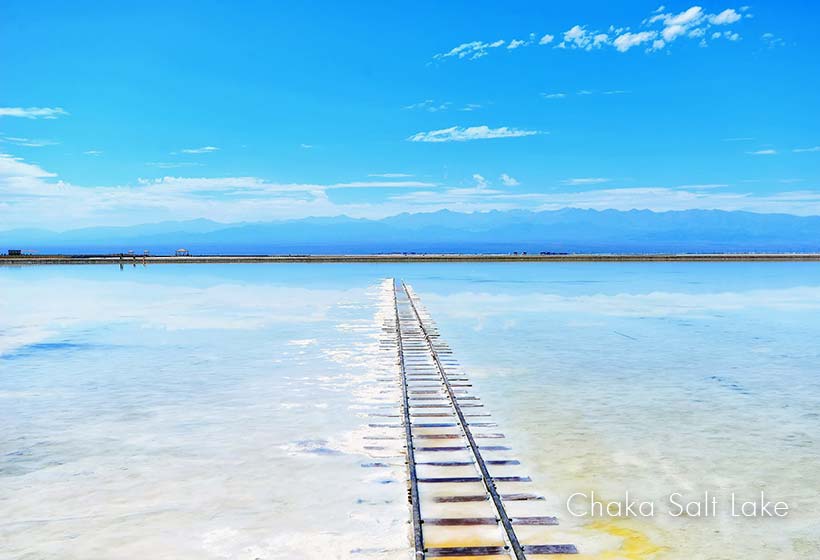 Chaka Salt Lake
Chaka Salt LakeChaka Salt Lake, located in the easternmost part of the Qaidam Basin, is bordered to the north by the Qilian Mountains and to the south by the Kunlun Mountains. It lies just one mountain range away from Qinghai Lake and is approximately 292 kilometers east of Xining. "Chaka" is a Tibetan word meaning "salt pond", and the lake is a saline lake. It is nestled between snowy mountains and grassy fields, featuring both solid and liquid brine. The lake is adorned with layers of green waves and patches of white salt, surrounded by snow-capped mountains and lush grasslands, with unique natural scenery and various salt formations.
Chaka Salt Lake has an average elevation of 3,059 meters and covers an area of 154 square kilometers. It is an important stop on the ancient Silk Road and is known as the "Eastern Gateway of the Qaidam Basin".
Surrounded by snow-capped mountains, calm surface of Chaka Salt Lake mirrors the beautiful, captivating sky, earning it the title "Mirror of the Sky". Walking on the salt flats feels like strolling in the clouds, with the water reflecting the sky and the sky blending seamlessly with the earth, as if walking within a painting. Chaka Salt Lake is a place of beauty throughout the year. In spring, the white clouds hanging low in the sky seem to fall into the lake, blurring the line between the pure whiteness of the salt and the clouds. In summer, the lake's emerald green waters ripple gently, refreshing the soul. In autumn, the dried-up lakebed is crystal clear and vast, stretching endlessly. In winter, the desolate, barren landscape presents a more challenging, yet awe-inspiring, scene.
- Address: No. 9 Yanhu Road, Chaka Town, Wulan County, Haixi Mongolian and Tibetan Autonomous Prefecture, Qinghai
- Open Hours: 07:00 AM – 08:00 PM
- Tour Length: 2-3 hours
Top 3: Kumbum Monastery
 Kumbum Monastery
Kumbum MonasteryKumbum Monastery, also known as Ta’er Temple, was founded in 1379 during the Ming Dynasty. It is named after the large silver stupa built inside the Great Golden Roof Temple to commemorate the founder of the Gelug School of Tibetan Buddhism, Tsongkhapa. In Tibetan, it is called "Kumbum Jampa Ling", which means "The Maitreya Temple with the Ten Thousand Statue of the Siṃhanāda Buddha".
Kumbum Monastery is the center of Tibetan Buddhism in Northwestern China and one of the six major monasteries of the Gelug School (Yellow Sect) of Tibetan Buddhism. It is well-known in both China and Southeast Asia, and has been highly regarded by successive central governments for its religious status. During the Ming Dynasty, prominent religious figures in the monastery were granted titles, and during the Qing Dynasty, Emperor Kangxi and Qianlong has once bestowed plaques to the monastery.
The main buildings of Kumbum Monastery are nestled against the mountainside, with an arrangement of structures at varying heights, unique and grand style, blending both Han and Tibetan artistic elements. The monastery is renowned for its "Three Treasures of Kumbum Monastery"—the yak butter sculptures, murals, and embroidery. In addition, the monastery houses numerous Buddhist scriptures as well as scholarly works on subjects such as history, literature, philosophy, medicine, and law.
- Address: No. 56 Jinta Road, Huangzhong District, Xining City, Qinghai
- Open Hours: 07:30 AM – 06:30 PM
- Tour Length: 2-5 hours
Top 4: Mengda Tianchi
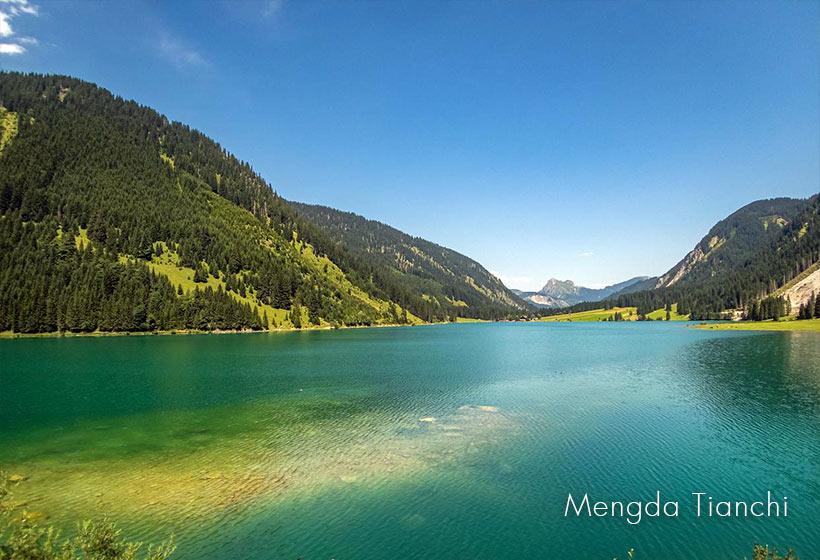 Mengda Tianchi
Mengda TianchiIn the gorge of the upper reaches of the Yellow River lies a beautiful forest sea that is still not well-known to the outside world—Mengda Forest Sea. The mighty Yellow River flows through towering mountains, rushing down for thousands of miles. The mountains on both banks rise and fall, showcasing the rough and majestic style of the Yellow River. Deep within the Mengda Forest Sea, hidden from the eyes of most, is a beautiful lake that emits a captivating glow—Mengda Tianchi. Established in 1980, Mengda Tianchi is praised as the "Xishuangbanna of the Qinghai-Tibet Plateau" and, together with Qinghai Lake, Chaka Salt Lake, and Ta'er Monastery, is considered one of the "Four Great Sights of Qinghai".
Mengda Tianchi covers an area of over 266,400 square meters, with a depth exceeding 30 meters. The surrounding area is often shrouded in mist, resembling the fairyland of the Queen Mother of the West’s Jade Pool. The water of the Tianchi, like an emerald embedded among the mountains, is crystal clear and turquoise, reflecting the blue sky and white clouds. The reflections of the surrounding peaks gently sway on the water's surface, as if the entire world is immersed in peace and harmony. In the lake, waterfowl soar and fish swim, which is a vibrant, lively scene.
- Address: Mengda Village, Qingshui Township, Xunhua Sala Autonomous County, Haidong City, Qinghai
- Open Hours: 08:00 AM – 06:00 PM
- Tour Length: 2-4 hours
Top 5: Zhuo’er Mountain
 Zhuo’er Mountain
Zhuo’er MountainZhuo’er Mountain is a branch of the Qilian Mountains, located in the middle section of the range, on the northern bank of the Baobao River. It faces the sacred Tibetan mountain Amidoṅso across the river and covers an area of approximately 603 acres. From the top of Zhuo’er Mountain, the view is extremely vast, with no obstructions in sight. To the left and right are the scenic areas of Ladong Gorge and Baiyang Ravine, while behind the mountain stretches the continuous Qilian Mountains. At the foot of the mountain, the roaring Baobao River winds around the county like a white Khata, encircling the town. Therefore, Zhuo’er Mountain is often referred to as the "back garden" of Qilian County.
In the early morning, golden sunlight bathes Zhuo’er Mountain, outlining the graceful and majestic contours of the peaks. From the summit, you can gaze upon the magnificent Qilian Mountain range. The distant snow-capped mountains shimmer in the sunlight, their silver glow meeting the deep blue sky, as if they form a staircase leading to heaven. Beneath the snow-capped peaks lies a vast, boundless grassland, where herds of cattle and sheep scatter like pearls across the green expanse. White Mongolian yurts dot the landscape, with wisps of smoke rising from chimneys, adding a touch of warmth and human presence to the serene pastoral scene.
- Address: Babao Town, Qilian County, Haibei Tibetan Autonomous Prefecture, Qinghai
- Open Hours: 08:00 AM – 07:00 PM
- Tour Length: 1-3 hours
Top 6: Menyuan Rape Flower
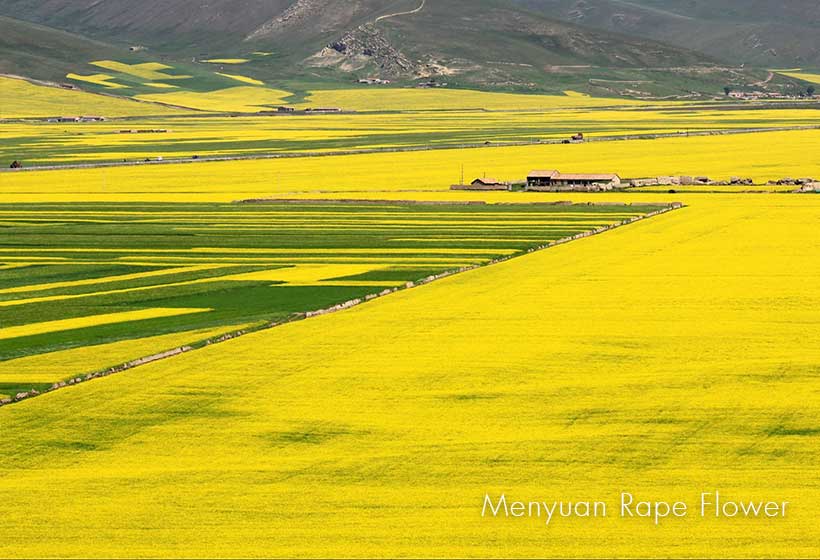 Menyuan Rape Flower
Menyuan Rape FlowerMenyuan Rape Flowers refer to a beautiful and spectacular man-made landscape in Menyuan County, where is the birthplace of the northern small rapeseed and is the largest small rapeseed planting area in China and even the world, with a planting area reaching 610,000 acres.
While they are not rare and can be found everywhere, the rape flowers in Menyuan are especially impressive. The flowers stretch from the northern Qilian Mountains, westward to Yong'an City, east to Yulong Shoal, and south to Dapan Mountain, covering more than a hundred kilometers like a golden sea. The vibrant yellow flowers grow along the banks of the Haomen River, crossing the Menyuan Basin, which, Under the deep blue sky of the plateau, complement the distant mountains, nearby waters, and the village houses, creating beautiful scenes both up close and from afar.
In mid-July, the best time to view the vast expanse of rapeseed flowers in full bloom arrives. Climbing up to the Yuanshan flower-viewing platform, one can gaze into the distance, feeling refreshed and mesmerized by the picturesque beauty of the scenery. The large fields of rape flowers pour out from beneath your feet, flowing over the slopes of the mountains, passing through villages, and spreading across the field, extending all the way to the horizon where the earth meets the sky, forming a breathtaking spectacle of the plateau.
- Address: Yuanshan Road, Menyuan Hui Autonomous County, Haibei Tibetan Autonomous Prefecture, Qinghai
- Open Hours: Flowering from 8 to 28 July
- Tour Length: 1-4 hours
Top 7: Dongguan Mosque
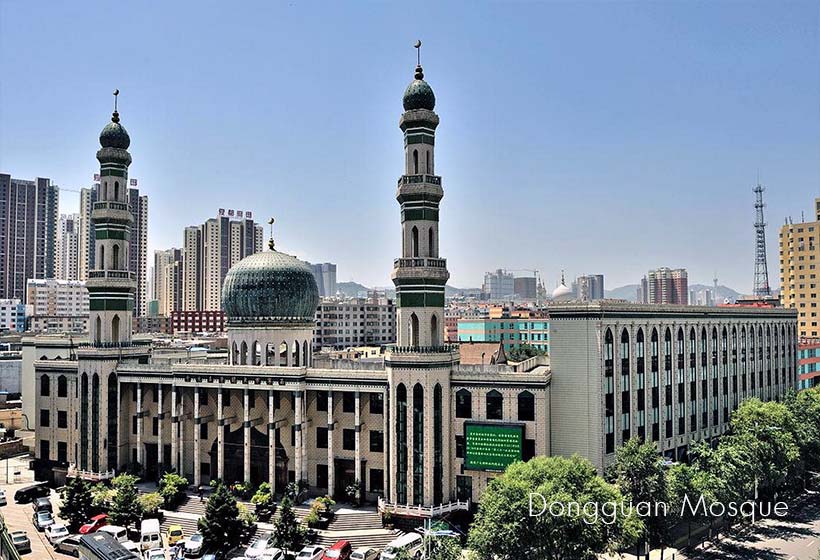 Dongguan Mosque
Dongguan MosqueThe Dongguan Mosque covers an area of 11,940 square meters and is the largest and best-preserved ancient building in Xining. It was built in 1380 during the Ming Dynasty and is one of the five main mosques of Islam in China, as well as one of the four major mosques in the Northwest region.
The complex of the Dongguan Mosque blends traditional Chinese classical architectural styles with Islamic architectural features and modern design elements, creating a harmonious fusion of the three. Looking at the layout and architectural style of the mosque, one must pass into the rear courtyard to officially enter the mosque. The rear courtyard features a primarily Chinese-style ancient architectural design, while the gates incorporate varying Western architectural styles.
The roof of the prayer hall is decorated in a distinctive manner, with colorful glazed tiles and small green tiles adorning the top, and a ceramic "Two Dragons Playing with a Pearl" decoration placed above. At the center of the hall’s ridge stands three gilded vases (sutra tubes gifted by the Labrang Monastery in Gansu), and on either side of the five main gates, there are also vases atop the minaret towers (sutra tubes gifted by Ta'er Monastery). These elements, combined with the overall layout of the hall, make a unique architectural style that is rarely seen in mosques across China’s Islamic structures.
- Address: No. 31 Dongguan Street, Xining City, Qinghai
- Open Hours: 07:00 AM – 08:00 PM except for Friday
- Tour Length: 1-3 hours
Top 8: Hoh Xil Nature Reserve
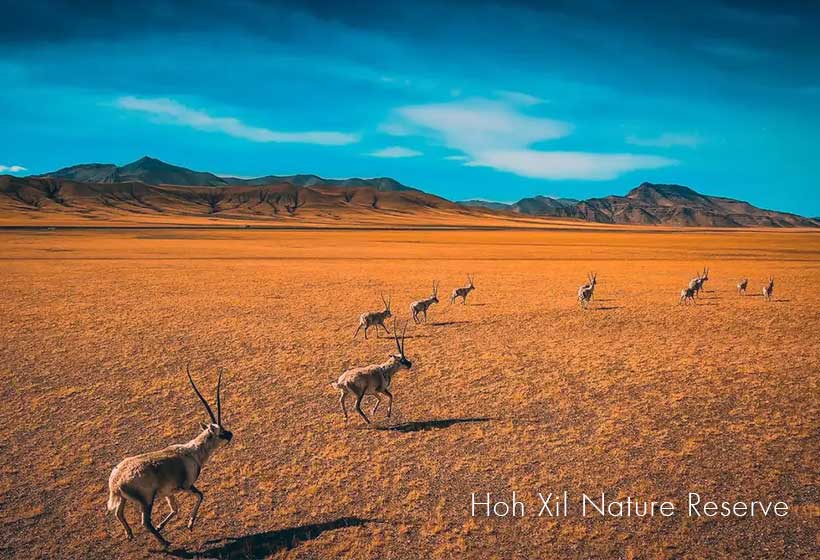 Hoh Xil Nature Reserve
Hoh Xil Nature ReserveHoh Xil, which means "green mountain ridge" in Mongolian, is located in the northern source area of the Yangtze River, at the southern foot of the "Mother of All Mountains” Kunlun Mountains. Covering an area of about 25,500 square kilometers and an average elevation of over 4,600 meters, Hoh Xil is known as the "Third Pole of the Earth" and is regarded as a rare wildlife gene pool on the Qinghai-Tibet Plateau. It is an essential part of the "Water Tower of China" and is often praised as the "Land of a Thousand Lakes" and "A Pure Land for People and the Moon". With its thin air and harsh climate, the extreme environment of Hoh Xil has nurtured its unique natural landscapes and rich biodiversity.
The Hoh Xil Nature Reserve, as the dazzling gem of this vast land, boasts magnificent natural scenery and is a paradise for wildlife. Rare animals such as the Tibetan antelope, wild yak, and Tibetan wild ass freely inhabit and breed in this area. Every time one steps into this land, it feels like a close encounter with nature, evoking both awe and a sense of intimacy.
The natural beauty of Hoh Xil is undoubtedly one of its most captivating aspects. The mountains here stretch and undulate, resembling the spine of the earth, supporting this vast land. High-altitude lakes are scattered across the region like mirrors, reflecting the blue sky, white clouds, and surrounding peaks. Glaciers shimmer under the sunlight, sparkling like nature’s most precious treasures.
- Address: Golmud City, Haixi Mongolian and Tibetan Autonomous Prefecture, Qinghai
- Open Hours: 08:00 AM – 05:00 PM
- Tour Length: 3-6 hours
Top 9: Qaidam Basin
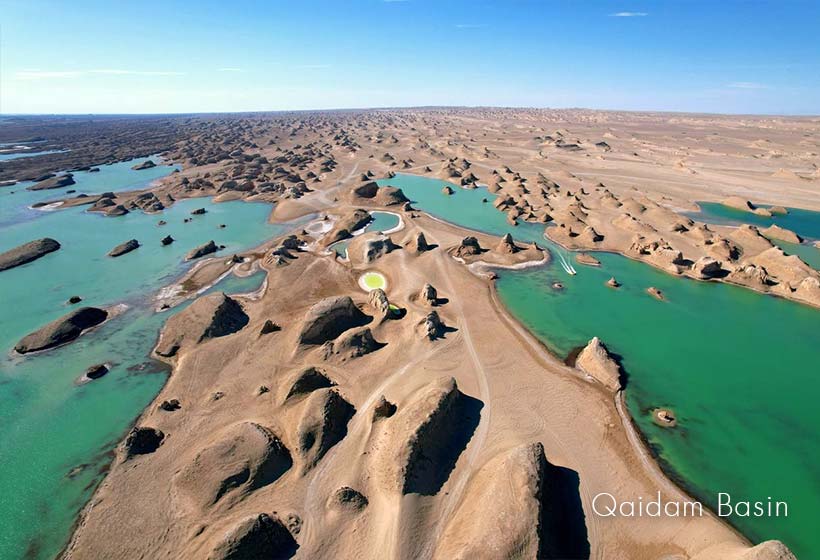 Qaidam Basin
Qaidam BasinThe Qaidam Basin, located in the northeastern part of the Tibetan Plateau and the northwest of Qinghai Province, lies between the majestic Kunlun and Qilian Mountains. Known as the "treasure basin" of the Tibetan Plateau, it is one of China’s three major inland basins, covering an area of 257,768 square kilometers. "Qaidam" is a Mongolian word, meaning salt marsh or saline-alkali land. The basin is not only a world of salt but also rich in petroleum, coal, and a variety of metal ores.
Salt lakes are scattered throughout the basin. In addition to the well-known Chaka Salt Lake, the Qarhan Salt Lake, as the heart of the Qaidam Basin, is the largest salt lake in China and the second largest in the world, boasting even more magnificent scenery than Chaka. With its white salt flats, crystal-clear lake waters, shimmering surface, and various salt crystallization, the place feels timeless, evoking an unexpected sense of inner peace.
If the dryness in the center of the basin has created the breathtaking salt lake landscapes, then the wind and sand have carved out the unique yardang landforms of the basin. The northwest part of the Qaidam Basin is home to the largest yardang landform group in China, where every evening, strong winds whip up sand and stones, swirling through the yardang forest. The strange sounds echo through the ridges, as if demons are descending.
- Address: Haixi Mongol and Tibetan Autonomous Prefecture, Qinghai
- Open Hours: 00:00 AM – 12:00 PM
- Tour Length: 1-3 days
Top 10: Emerald Lake
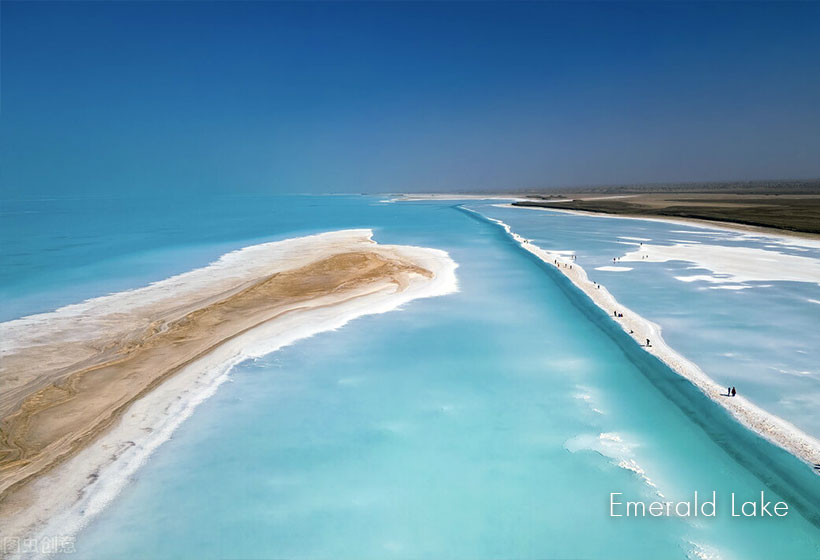 Emerald Lake
Emerald LakeThe Emerald Lake, fully named Da Qaidam Emerald Lake, is situated at an altitude of 3,148 meters, covering an area of 15 square kilometers. It is the third-largest artificial lake in Haixi Prefecture. In Mongolian, Da Qaidam means "Great Salt Lake". This lake is located in the former salt mining area of the Da Qaidam Chemical Plant, and its water contains metals like potassium, magnesium, and halides. Under the reflection of the blue sky and white clouds, the lake appears emerald green, hence its name "Emerald Lake".
The lake has a high salt content and never freezes, even in winter. The water color varies with the seasons. The inner layers are a deep blue, while the outer layers are a cream blue, with the right side showing an olive green hue and the left side presenting a yellowish spot. The water is crystal clear, and through the surface, you can clearly see the salt layers beneath. Under the sunlight, the lake sparkles with a dazzling array of colors, resembling scattered emerald gemstones, a breathtakingly beautiful sight.
- Address: Dachaidan town, Haixi Mongolian and Tibetan Autonomous Prefecture, Qinghai
- Open Hours: 09:00 AM – 06:00 PM
- Tour Length: 3-5 hours
Customize Your Unique Qinghai Plateau Tour

If you are interested in the Qinghai itineraries mentioned above, please contact us, and we will be happy to customize it and provide a quote tailored to your preferences.
Alternatively, if you would like to customize your Qinghai Tour, please visit our Qinghai Tour Customized Center. We assure you that you will receive a reply within 24 working hours.
Informative Articles for Your Qinghai Trip
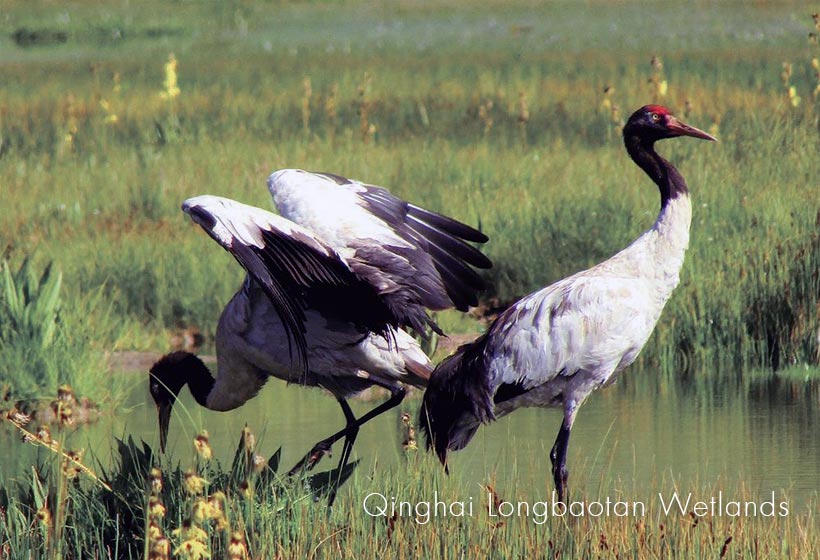 Qinghai Wetland
Qinghai Wetland- Travel Guide: attractions, weather, hotels, food, etc.
- Weather: the best time and seasons to visit Qinghai
- Top attractions: sightseeings to watch in Qinghai
- Local culture: brief history, folk culture, festivals, etc.
- Top destinations: best places to visit in Qinghai
- Travel itineraries: itineraries for your reference
- Abundant activities: Qinghai cultural immersions
- Unique perspective: top interesting things to do
- Local food: what to eat while traveling in Qinghai
- Luxury hotels: accommodation to stay in Qinghai
- Qinghai Tours: customized tours for your reference
GREAT FAMILY CHINA TOUR
JULY 2024 We wanted to thank Grace at China Culture tour for organizing a great tour of China. We enjoyed our Beijing - Xian-Chengdu -Guilin -Yangshuo - Shanghai trip. Our local guides Bruce in Beijing, Susan in Xian, Jane in Chengdu, Mike in Guilin and Mary in Shanghai took care of us…read more details »
Teng Han L from SINGAPORE
Ready to Create a Unique Dream Travel?
